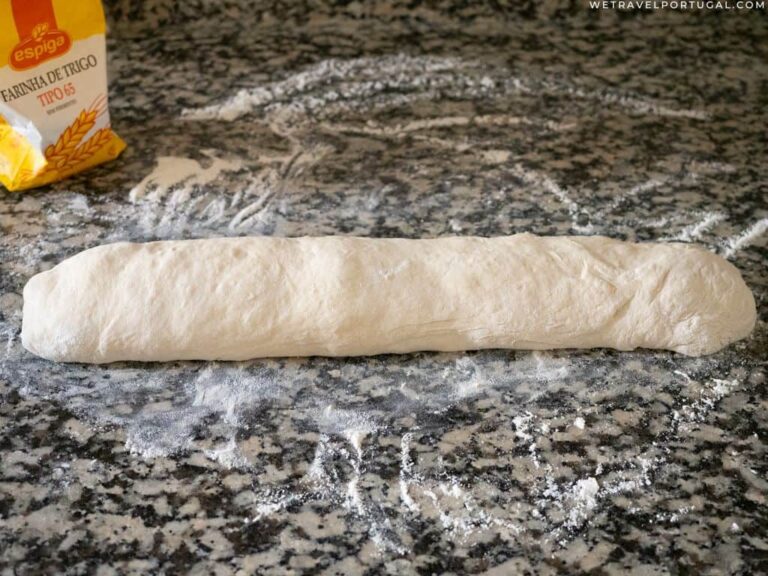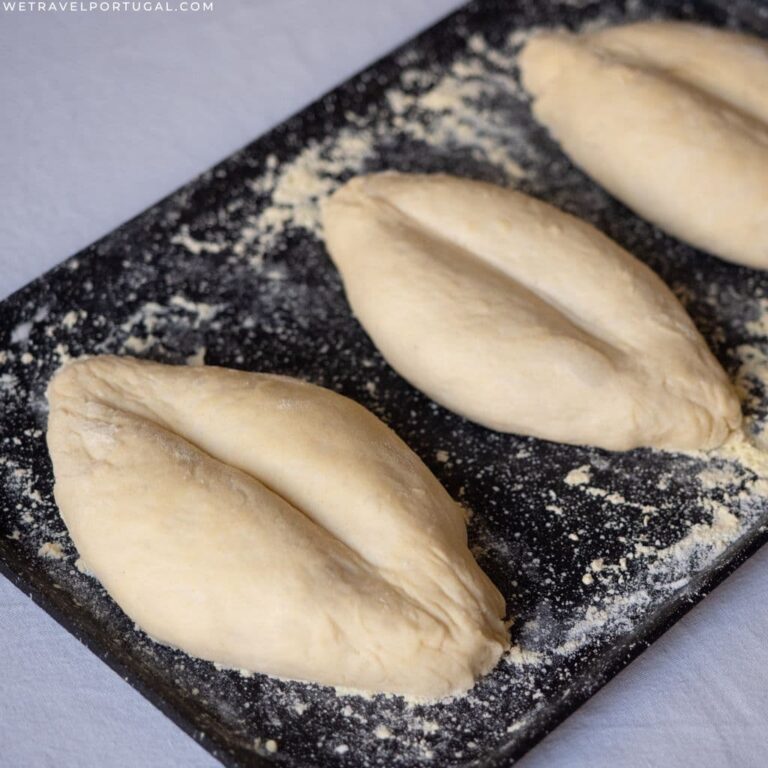Papo seco sometimes referred to as carcaça is a Portuguese bread roll which is very popular in bakeries and households across the country. With an oblong shape and a crease in the middle, its great in sandwiches, toasties, or simply as a butter vessel. And most importantly, it is the bread used in the acclaimed bifanas. It’s crusty on the outside and fluffy on the inside, and it just so happens to be really simple to make at home, not requiring any previous bread making skills nor fancy equipment. Just a little patience and a few ingredients.
What Type of Flour Should You Use for Papo Secos?
For bread making in general, you will want to use ‘bread flour’ which contains a higher percentage of protein, usually between 12-14%, against 9-11% of all-purpose flour. A higher percentage of protein helps creating a more developed and stronger gluten ‘network’, resulting in a bouncier, more crusty bread. Which is precisely what we need for this recipe!
In Portugal, it can be a bit tricky to find flour with higher protein content at conventional stores or supermarkets. So, if going on a flour hunt is not an option for you, you can use flours labelled as T65 sem fermento which are available in all supermarkets, and work quite well for this recipe.

Different Types of Yeast for Portuguese Bread
For this recipe we are using active dry yeast that again is very easy to find at any supermarket or grocery stores. This type of yeast needs to be proofed before being incorporated in the flour.
You can also use instant yeast, that you can mix directly with the other ingredients. If you are using instant yeast, keep in mind that you still need to add to your dough the amount of water used to activate the yeast, in our case, the total amount of water used in the recipe is 465ml of water, as it has a hydration level of 68%. You will also have to reduce the amount of yeast by 25%, so instead of 7g, you will need 5.25g. On the other hand, if you use want to swap active dry yeast for fresh yeast, you will need twice the amount required, that is 14g. In this case, the activating process is the same.

How to Store Papo-Secos
Once baked, the bread rolls can be stored in an airtight container or resealable bag at room temperature for up to 3 days. If they go stale, you can revive them by brushing their crusts with some water, and then placing them in the oven at 160°C for 3-4 minutes. We also like to slice any remaining papo-secos, place them in a resealable bag, and store in the freezer for up to 3 weeks. You can defrost them simply by popping them directly in the toaster.
How to Make Homemade Papo-Secos

Have you tried our papo-secos recipe? Let us know in the comments! If you are looking for traditional ways of eating these Portuguese bread rolls, perhaps you want to check our Bifana recipe, or the delicious Prego no Pão.
Follow Us!




